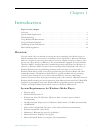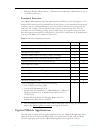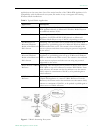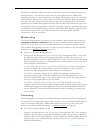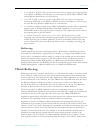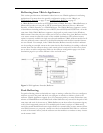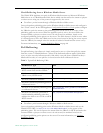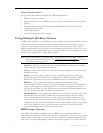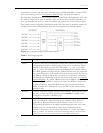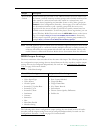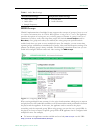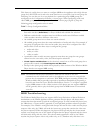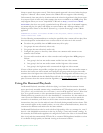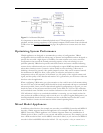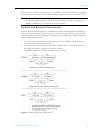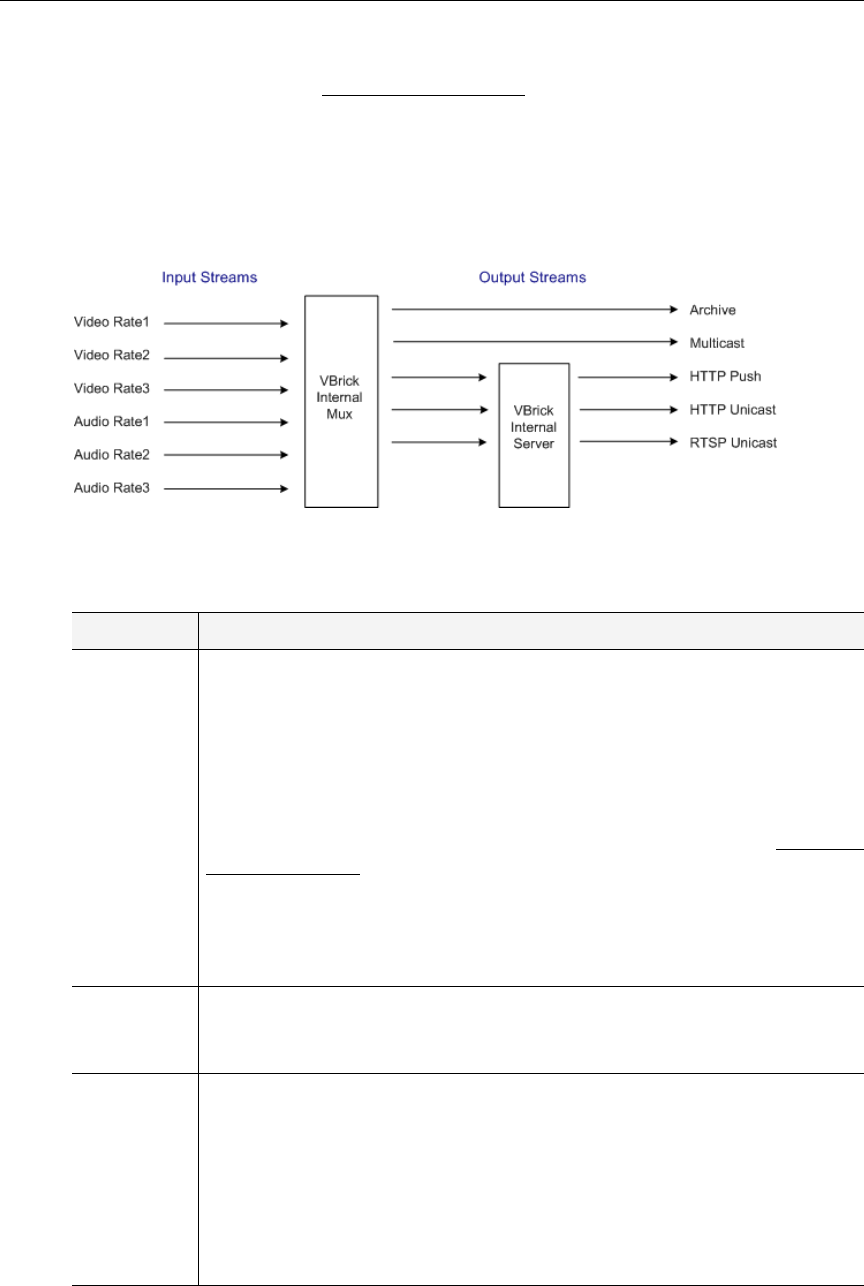
Introduction
VBrick WM Appliance Admin Guide 9
combinations of audio and video rates for multicasting, HTTP and RTSPU serving, HTTP
Push, and Archiving. See the Configuration: Encoder pages for more information.
The following drawing shows the selectable output streams from a WM appliance. (Note that
the Archive output on the right is actually a .wmv file rather than a stream.) Depending on
your requirements and what you select, the VBrick will produce any or all of these outputs.
Each output can be configured with different audio and video rates. A multicast stream, for
example, can be substantially different from the served, pushed, or archived streams.
Figure 3. Configurable Input/Output Stream Rates
Table 4. WM Output Streams
Output Description
Archive An archive .wmv file is automatically created if the Archiver is running on the
Configuration: Encoder > Archiver page. There are no restrictions on the
"includes". This means you can select Video Rates 1, 2, and 3, and Audio
Rates 1, 2, and 3. All included streams are multiplexed into a single archive
file. A WM Appliance configured with a VBStar hard drive lets you create and
save a .wmv file archive of the streams directly from the encoder. The file can
be FTPed to a Windows Media Server or moved to a Windows system and
played locally by a Media Player. (It can also be accessed locally via Using On
Demand Playback.) In a mixed VBStar model with an MPEG-2 encoder and
a WM encoder, the MPEG-2 encoder can archive the MPEG-2 stream and
the WM encoder can archive the WM stream. In a mixed model with an
MPEG-2 decoder and a WM encoder, only the WM encoder stream can be
archived to disk.
Multicast A multicast stream is typically used on a local intranet. It has only one video
rate and one audio rate and is produced when
Transmit is enabled on the
Configuration: Encoder > Multicast page.
HTTP Push An HTTP Push is a unicast stream that can be pushed to a maximum of 25
different destinations. These destinations are typically VBrick Reflector
Appliances or Microsoft Windows Media Servers. There is one set of
configuration parameters to set address, publishing point name, user name,
password, etc. for each destination. There are no restrictions on the
"includes." This means you can select Video Rates 1, 2, and 3, and Audio
Rates 1, 2, and 3. All included streams are multiplexed into one stream, and all
destinations receive the same stream (with the same MBR combination).



